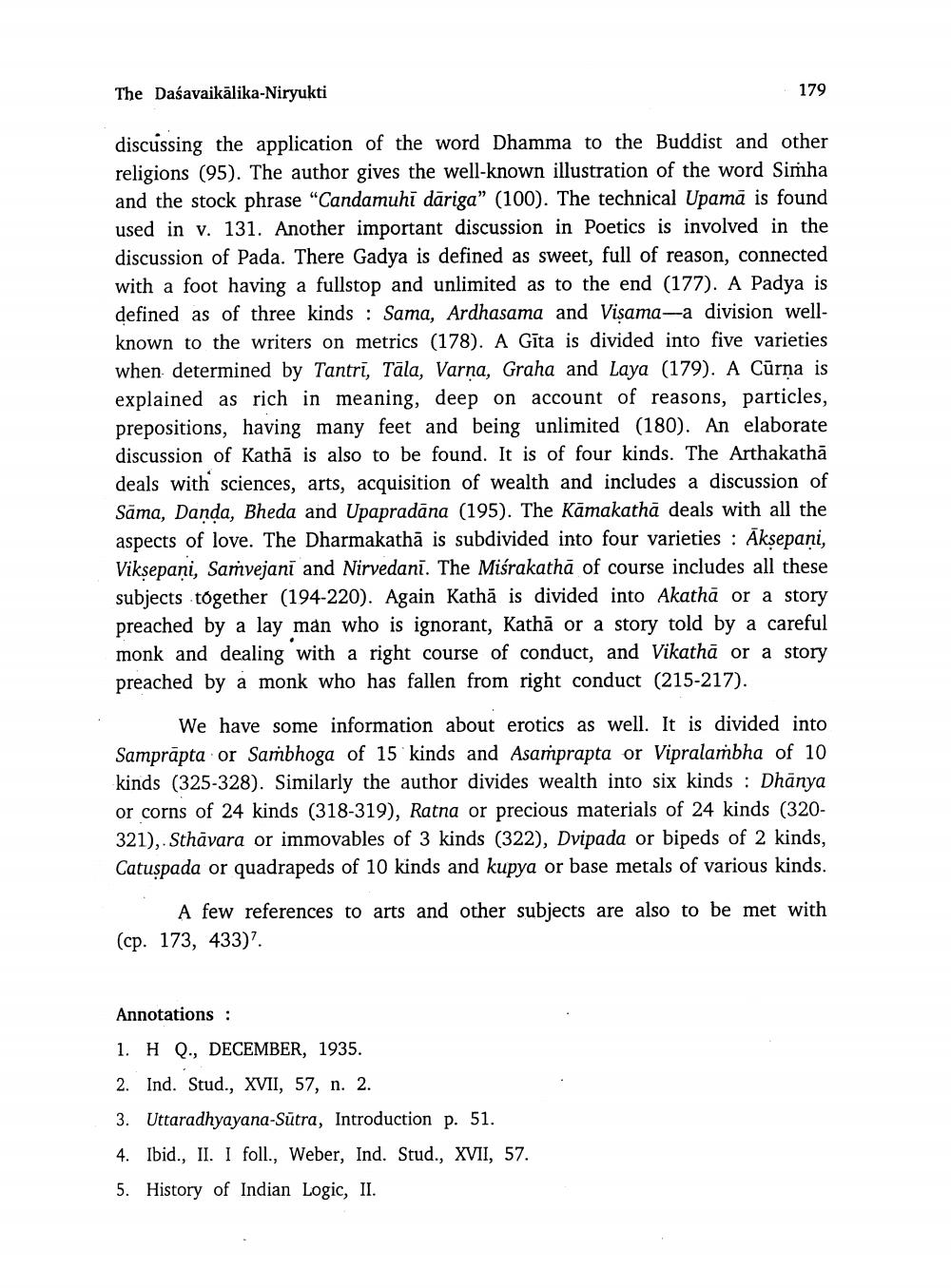________________
The Daśavaikālika-Niryukti
179
discussing the application of the word Dhamma to the Buddist and other religions (95). The author gives the well-known illustration of the word Simha and the stock phrase "Candamuhi dāriga” (100). The technical Upamā is found used in v. 131. Another important discussion in Poetics is involved in the discussion of Pada. There Gadya is defined as sweet, full of reason, connected with a foot having a fullstop and unlimited as to the end (177). A Padya is defined as of three kinds : Sama, Ardhasama and Vişama-a division wellknown to the writers on metrics (178). A Gīta is divided into five varieties when determined by Tantri, Tāla, Varna, Graha and Laya (179). A Cūrņa is explained as rich in meaning, deep on account of reasons, particles, prepositions, having many feet and being unlimited (180). An elaborate discussion of Kathā is also to be found. It is of four kinds. The Arthakathā deals with sciences, arts, acquisition of wealth and includes a discussion of Säma, Danda, Bheda and Upapradāna (195). The Kamakathā deals with all the aspects of love. The Dharmakathā is subdivided into four varieties : Aksepani, Viksepani, Samvejani and Nirvedani. The Miśrakathā of course includes all these subjects together (194-220). Again Kathā is divided into Akathā or a story preached by a lay man who is ignorant, Kathā or a story told by a careful monk and dealing with a right course of conduct, and Vikathā or a story preached by a monk who has fallen from right conduct (215-217).
We have some information about erotics as well. It is divided into Samprāpta or Sambhoga of 15 kinds and Asamprapta or Vipralambha of 10 kinds (325-328). Similarly the author divides wealth into six kinds : Dhanya or corns of 24 kinds (318-319), Ratna or precious materials of 24 kinds (320321), Sthāvara or immovables of 3 kinds (322), Dvipada or bipeds of 2 kinds, Catuspada or quadrapeds of 10 kinds and kupya or base metals of various kinds.
A few references to arts and other subjects are also to be met with (cp. 173, 433)?
Annotations : 1. H Q., DECEMBER, 1935. 2. Ind. Stud., XVII, 57, n. 2. 3. Uttaradhyayana-Sutra, Introduction p. 51. 4. Ibid., II. I foll., Weber, Ind. Stud., XVII, 57. 5. History of Indian Logic, II.




